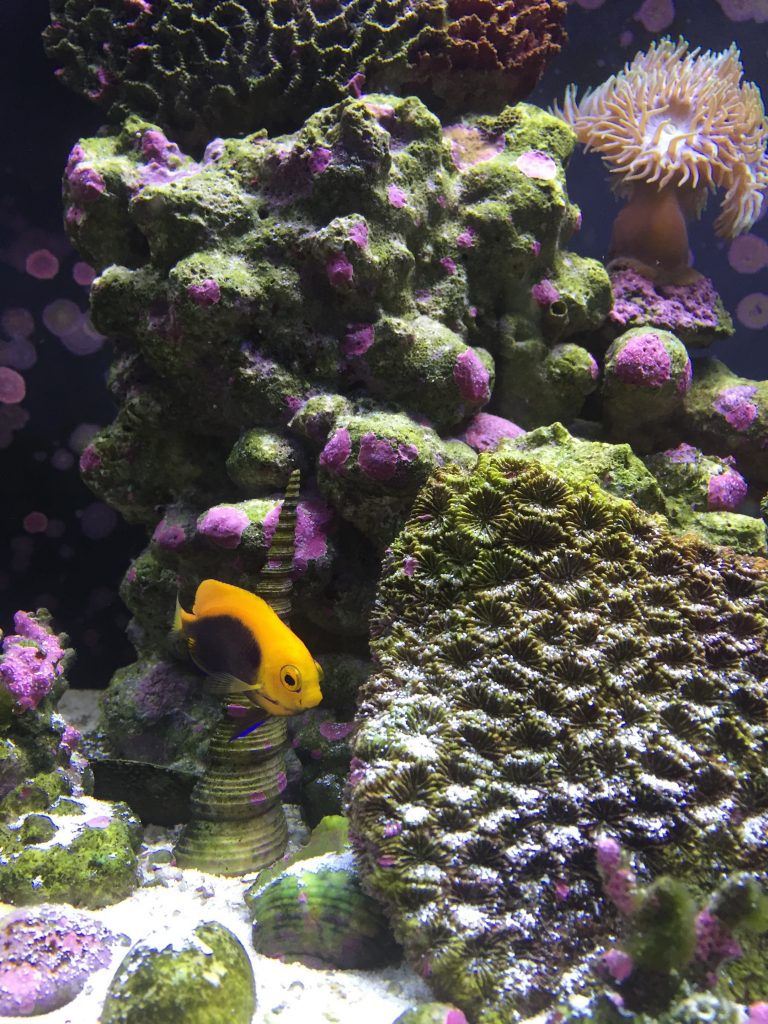If you’re new to owning an aquarium or thinking about starting one, there are several things you should know about live rock for fish tanks. Following is some basic information about what live rock is, how it is used and its benefits.
What you Need to Know about Live Rock for Fish Tanks
What is Live Rock?
Live rock is a piece of coral reef from the ocean that has broken off and moved to shallower water, where a variety of invertebrates make it their home. Hobbyists use the word “hitchhikers” to describe the types of wildlife that can be found on live rock. The beneficial types of hitchhikers include coralline algae, brittle stars, urchins, dusters, a variety of worms and pistol shrimp.
5 Benefits of Using Live Rock in your Aquarium
1. Live rock acts as a filter.
Species living on live rock and the structure itself improve the health of the aquarium by doing such things as getting rid of waste and unwanted algae. The rock and the good bacteria on it contribute to the conversion of the ammonia caused by toxic fish waste into less harmful nitrite and nitrate, known as the Nitrogen Cycle.
2. It contributes to a natural state.
Having these invertebrates on the live rock and therefore in your tank contributes to a more natural ecosystem. In the oceans and lakes, you would find all kinds of fish, plants and other creatures, and they all have their own jobs to do.
 3. It contributes to fishes’ enjoyment in the tank.
3. It contributes to fishes’ enjoyment in the tank.
Most fish enjoy swimming around or in the grooves in the rock, as well as plants and gravel. Some of the more private fish like to hide behind or in them.
4. It beautifies the tank.
Live rock in its natural state has a beauty that cannot be rivaled. It is real, straight out of the water. You can’t quite explain it, but when you look at it, you know you have something special, beautiful, natural and unique. And there’s just no matching that.
5. Watching the live rock come to life is spectacular.
The growth over time on live rock will feature an array of colors and amazing creatures. It will change over time as well, so there will always be something new to see.
The Drawbacks of Live Rock
While we think it’s well worth it, one of the drawbacks of using live rock in your aquarium is the cost. Because it is wet, it is heavier, so shipping costs are more expensive.
Another negative is that some of the creatures that are on the rock might not be the best suited for your tank’s environment, so you will have to be careful what you introduce into it. Just like some of the good hitchhikers might call it home, some of the bad hitchhikers may decide to take a ride as well.
However, if you keep your eye on it, your tank and its inhabitants should do just fine.
Contact Seatech Aquariums for More Information
If what you need to know about live rock for fish tanks was not answered here or in our past blogs, let us know! We will be happy to fill in the blanks and help you create a beautiful, vibrant and healthy aquarium.
Otherwise, if you’re ready to start an aquarium, or if you need help beautifying or maintaining your existing one, we are here to help. You can reach us through our Seatech Aquariums website or by phone at 602-628-7270.






